Search
Search Results

Image
Tablet of Proverbs
Neo-Assyrian clay tablet of proverbs with 19 lines of bilingual inscription, from the Library of Ashurbanipal, Kouyunjik, Iraq.
The British Museum, London.
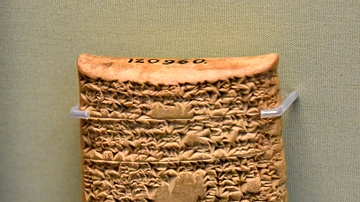
Image
Mesoptamian Tablet Describing Glass Manufacture
From the cuneiform inscriptions on this clay tablet we can conclude that recipes for making red glass were written with a made-up ancient date to give the impression of authority. Circa 1400-1200 BCE. Probably from Tell Umar (Seleucia on...
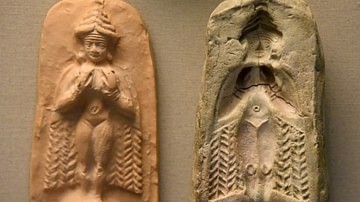
Image
Ishtar Clay Mould
This is a fired clay mould for the goddess Ishtar. The goddess is depicted nude. She holds her breasts with her hands and wears a horned crown. She has a pair of wings (or a cloak) and her feet are talon-like. On the left is the modern impression...

Image
Model Clay Dogs from Nineveh
These counterparts of real mastiffs were buried to guard a property from devils and demons. Ritual instructions for making and inscribing them survive on clay tablets. This pack was found beneath a palace doorway at Nineveh. Each is named...
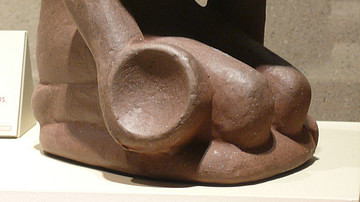
Image
Chunkey Player Flint Clay Figurine from Cahokia
The Chunkey Player Effigy Pipe (also known as "The Chunkey Player"), made of flint clay, measuring 8.5 inches (22 cm) high by 5.5 inches (14 cm) wide. Thought to have originally come from Cahokia but found in Muskogee County, Oklahoma, dated...
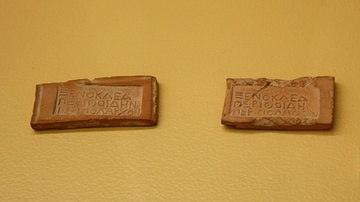
Image
Greek Clay Passport Tokens
Clay tokens probably used as passports by travellers or messengers reporting between military headquarters. Belonging to Xenokles, a border commander, 4th century BCE. (Agora Museum, Athens)
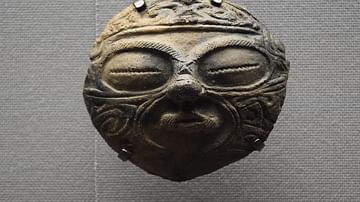
Image
Jomon Clay Mask
A Jomon clay mask or domen. Kidukuri, Kamegaoka, Tsugaru-shi, Aomori, Japan. Jomon Period, 1000-400 BCE. Important Cultural Property. (Tokyo National Museum)
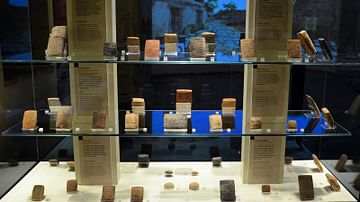
Image
Cuneiform Clay Tablets from Kanesh
Clay tablets with cuneiform letters found at Kültepe in central Turkey (ancient Kanesh), 1900 BCE – 1700 BCE. They were all written by merchants who, from around 1900 BCE, had come to Kanesh from the city of Ashur in Assyria and established...
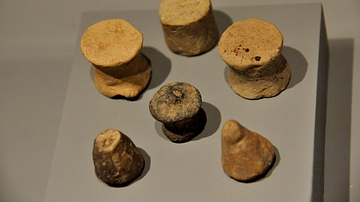
Image
Clay Tokens for Counting
These clay tokens represent the first form of counting, before the invention of writing. They date back to the Neolithic period, 8000-7000 BCE and were found in Tapa Raza, south-east of modern Sulaimaniya Governorate, Iraq. (The Sulaimaniya...
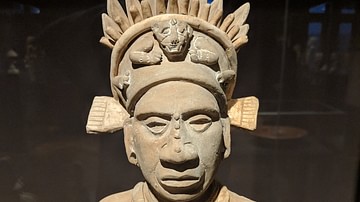
Image
Clay Maya Nobleman Figure
Maya Nobleman, Jaina, Maya culture, Late Classic Period, c. 600-900 CE. Campeche, Mexico. Fired clay with remnants of paint.
Exhibited at Museum Rietberg, Zurich, Switzerland.